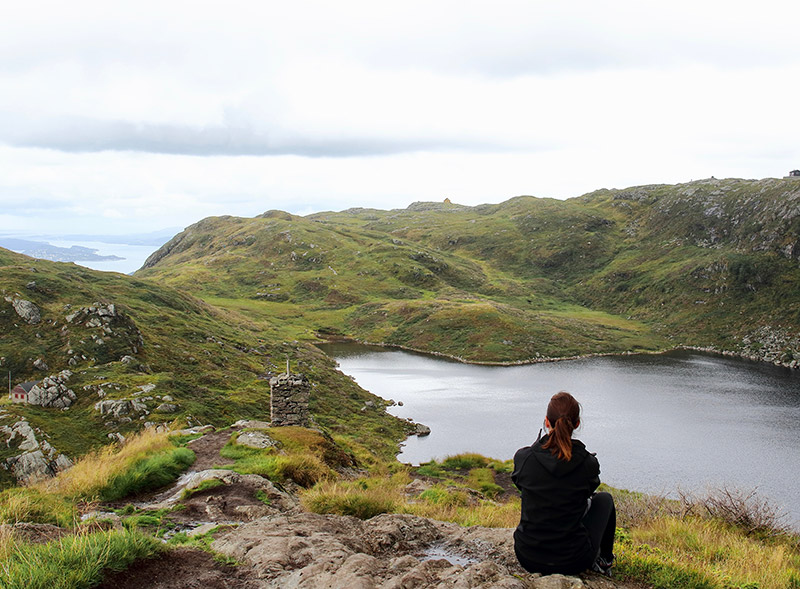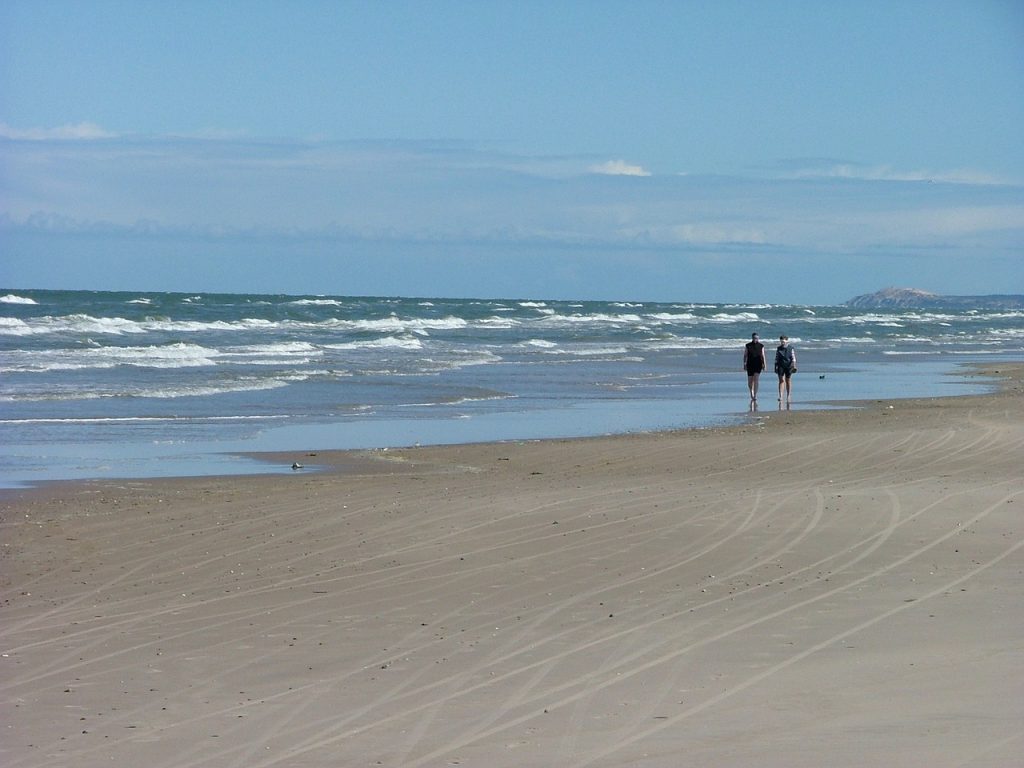
One study provides an alternative view on happiness in northern Europe.
The Nordic countries are consistently ranked as the happiest countries in the world according to World Happiness Reports published since 2012. Because of this, other countries often look to them for guidance when it comes to nurturing the well-being of their people.
However, in our recent study, we found that people living in parts of southern Europe had higher mental well-being than those living in the north.
We used a scale which asks to what extent a person has felt good and functioned well over the past two weeks. “Feeling good” can mean feeling relaxed, optimistic or energetic, and “functioning well” can mean being able to think clearly, deal with problems and socialise.
Comparing Denmark with Catalonia
We recently applied the scale in Denmark and compared the national mental well-being estimates of Danish people with people living in Iceland, Catalonia and England.
We found that people in Catalonia scored considerably higher on mental well-being than people in all three northern European countries – challenging the prevailing idea that places in northern Europe are typically happier than those in southern Europe.

In the World Happiness Reports, which tend to show the Nordic countries as leading, happiness is measured using Cantril’s ladder of life evaluation. This asks people to rate how they currently view their life on a ladder scale in which zero is the “worst possible life for you” and ten is the “best possible life for you”. But such measures are strongly influenced by economic conditions and are poor proxies for mental health and well-being.
Research has shown that while life evaluation rises proportionately with income, emotional well-being – measured by an individual’s experience of pleasant and unpleasant emotions – rises with income only to a certain point. If people are below a certain economic threshold, they are more likely to be emotionally unwell and have low life evaluations. Above this threshold, life evaluations continue to improve, but ratings of emotional well-being do not.
In other words, high income may buy better life evaluations, but this is not the same as positive mental health and well-being. A recent report also showed that inequalities in life evaluation appear to be rising in several places in Scandinavia, and that a considerable amount of people in the Nordic countries appear to be struggling, contrary to what these countries are famous for.
The “happiest place in the world” label may therefore be misleading, given its rather simplistic focus on life evaluation. As our research shows, using more sophisticated measures of well-being can tell a different story.
New approaches to mental health
While there is widespread consensus that a “good” society is one that maximises human well-being, how to measure and promote this is controversial. In the words of the philosopher Thomas S. Kuhn:
The answers you get depend on the questions you ask.
There may be particular features of Catalonian culture and lifestyle that promote mental well-being more readily than in other places. It is now increasingly recognised that there can be “no sustainable development without mental health”, so Catalonia’s secrets might be valuable for learning more about what really matters for mental well-being.
Promoting positive mental health
So far, the conventional approach to mental health in Europe focuses on the treatment and prevention of mental illness, as well as efforts to destigmatise poor mental health. While these are valid, they are reactive and focus on risk factors for poor mental health rather than on how to promote and maintain positive mental health and well-being.

This approach does not account for the fact that mental health is more than just the absence of mental illness. To quote the medical historian Henry E. Sigerist, health is “something positive”.
The absence of pessimism does not automatically produce optimism, the absence of sadness does not automatically produce joy. So it goes with the entire spectrum of human thoughts and emotions.
Rather than just focusing on what causes and protects against mental illness, society must also consider the causes of positive mental health, and prioritise it.
Positive mental health and well-being is associated with better physical health, positive interpersonal relationships and socially healthier societies. Positive mental health and well-being is, in other words, desirable in its own right and may further help prevent common mental health problems occurring in the first place and help people during recovery from mental illness.
Encouraging active lifestyles
Promoting mental health and well-being throughout a population can mean encouraging active lifestyles, providing opportunities for people to interact and feel they belong within a community, or fostering a sense of purpose by increasing contribution to society or meaningful causes.
It can also include efforts focused on individuals, such as encouraging self-care and opportunities to hone personal and social skills and pursue creative endeavours. The combination of universal and individual approaches has proved important in many different settings.
Look beyond the Nordic countries
There is still plenty to learn about positive mental health and how to promote it, and our results suggest people should not only look to the Nordic countries for guidance.
Asking the right questions could enable a better understanding of what drives positive mental health, and how it can be promoted. While reducing poor mental health is necessary to make life bearable, positive mental health makes life worth living.
This article was written by Ziggi Ivan Santini, Sarah Stewart-Brown, and Vibeke Jenny Koushede. It was first published by our friends at The Conversation, and republished here with permission.


In 2016, I met two specialists Doctor’s at the hotel attached to Stavanger University Hospital. They had been on strike for two weeks. The issue was long working hours. One specialist told me she worked nineteen hour days. It impacted her family life. They told me that medical staff were also on strike at Bergen and Oslo hospitals.
In other conversations, Norwegians did express happiness when they told me of their outdoor activities. Conversely, I met up with someone in Bergen I had known in my Australian city. She complained there had been only one sunny day during two months of summer. She seemed very depressed.
The people on trains were mostly silent. People generally didn’t talk to each other let alone other people. They were very comfortable trains but the silence was so different to trains in other countries were people did talk to create an atmosphere.
I live in Norway and I love it that people don’t talk in trains. And if they do, they do it at low volumes just to each other. I think that is the considerate thing to do. People want to listen to music, read, look out the window and enjoy the wonderful Norwegian nature, or just close their eyes and relax. All of the above was very hard to do last summer when I was in the train and there were some American tourists that talk so loud that you could even hear them all the way to the next railcar.
However it is true what you say about the winter and the lack of light. I personally enjoy winter -when it is a good one: snow and cold!- but most people get depressed or low in spirits. So regarding this study, I think the time of the year when they interview people is a big factor in how they answer the questions about how well they feel about life.
Esteban is dead on correct. A 2 week study in Norway is a waste of time and paper. I love Norway also, and love all of the seasons and lived from the South to the North, and East to the West. Many people suffer from what they call the “Grey Disease,” when it rains incessantly on the West coast, Bergen being a prime example. Some are affected by the very long winters with 6 to zero hours of daylight. Any study during the dead of winter would be misleading. A study performed during May of June would probably swing the other way because of long days of perfect temperature, easy access to the forests and sea, and an opportunity to leave the city and stay in the cabins that most people have in the countryside to commune with nature. Currently I live in Thailand, which has fairly consistent temperature and daylight all year long. There seems to be no swings in mood or behavior. This would probably be much the same in Southern Italy. This is apples and oranges territory.
Happiness and contentment is something that I find that is within me. It cannot be bought… but I believe we are products of our habits, and often reflect our environment. If you choose to come home and drink all night, then you are likely going to have a good time in the first hour or two yet that will likely inspire depression, psychosis, diabetes and other health issues. This type of behavior left unattended will spur the onset of depression, anger, frustration perhaps to the point of death.
One important aspect of a growing social trend is the theme that we should all have Income Equity, total diversity, acceptance of cultures that clash with ours and other paradigms that conflict with nature. “Birds of a feather flock together” …but we are also told that it is wrong to exclude people that are different from our groups of friends, churches, or social circles. Yet when we are influenced negatively by social conditions and complain about this, we are also told that we must accept people who are different from us and it cannot change. This breeds contempt, frustration, anger and confusion. Allowing certain social areas of our society to exclude us from entering their growing social circles is a crime against anything that will progress harmony and unity of a Nation.
Personally, I have worked diligently over the last year to identify the things that irritate me or cause enough concern for me that would be a detriment to my well-being. It is not always practical or easy to limit my exposure to these negative influences, so I try to deal with them as best I can, but make ample time for myself in the outside world with long distance walking, ice baths, fasting and planning my day better… and I’ve recently discovered the Wim Hof method of breathing and meditation.